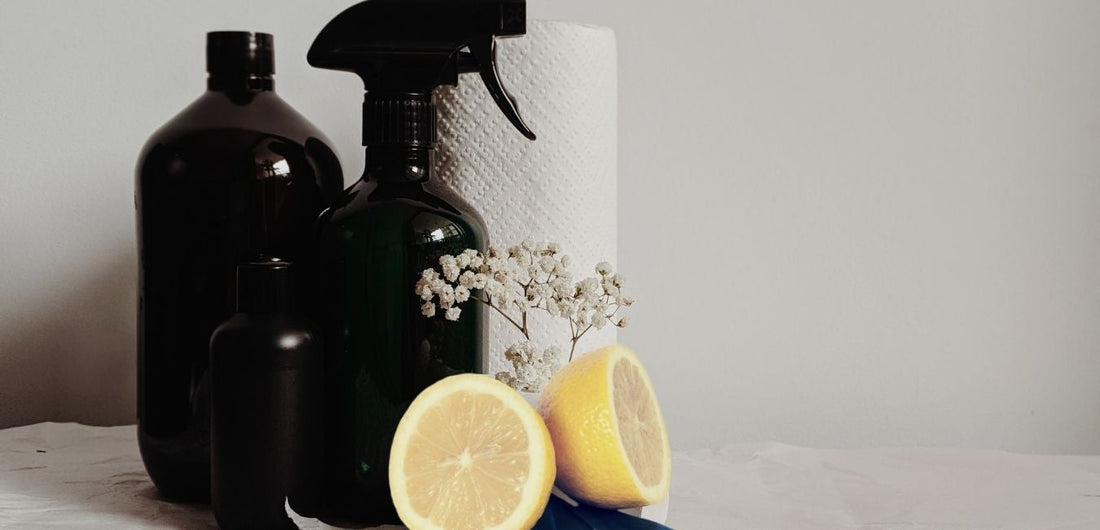
These are the points you should consider when cleaning a composting toilet
Share
Composting toilets also want to be maintained
A composting toilet represents a different concept from that of the usual standard toilets.
Again and again I find discussions on the net about cleaning a composting toilet. After all, there is no water to flush and clean the toilet from the outset.
A composting toilet, also called a dry toilet, makes a considerable difference.
It does not need any water at all. Hence the name: dry toilet.
This type of toilet is often also called a composting toilet, since the separated components are basically compostable.
It should be mentioned that composting is not recommended when taking medication, as the components are often also found in the excreta.
--> Info: How a composting toilet works
Things to know about human excretions
Every person excretes 100 - 200 g of stool daily. Vegetarians, on the other hand, excrete up to 1000 g daily due to their cellulose-rich diet.
Fasting and low-fibre diets reduce the amount of stool. At least, that's what you can read in the Apothekenumschau.
What is human faeces made of?
Human faeces consists of non-absorbed parts of food, living microorganisms of the intestinal flora and the body's own substances.
The non-absorbed parts are undigested residues of starches, fats, fibres, connective tissue and muscle fibres, as well as water.
The body's own substances are, for example, residues of digestive enzymes, mucus, rejected intestinal cells, bile pigments and small amounts of bile acid.¹
Can faeces be composted?
Since stool is basically just organic matter, it is compostable.
In addition, fertilisation has been carried out for centuries with the help of mostly animal excreta. Field farming is an example of this.
Guano (bird droppings) is also used for fertilisation in some countries, as well as being available for purchase as packaged good soil for the garden.
I would like to mention Terra Preta in this context.
This is a special nutrient-rich black soil from the Amazon basin. It comes from the Indians and was created by them.
The Indians dug pits to bury their waste in. Studies have shown that it contains compostable food scraps, bone and fish bones, human faeces as well as charcoal remains and shards of clay.
This mixture creates some of the best soil around. This soil is incredibly rich in nutrients.²
Perhaps we have found an extraordinary idea here to transform the solids from our composting toilet.
It is also important to mention that in the decomposition process, potential pathogens are broken down and killed. This is done by the microorganisms present.
Composition of urine and why it does not stink in urine-diverting toilets
An adult person excretes between 1.5 - 2 L of urine daily. This consists of 80 % water.
Usually, fresh urine does not smell. However, certain foods, such as asparagus, garlic or alcohol, have an effect on the smell.
The strong ammonia odour only develops when the urine is decomposed by bacteria, and thus odour develops during prolonged storage.
However, dry toilets are not designed to store urine for long periods of time. The containers are usually emptied every 2-3 days so that odours do not develop in the first place.
The combination with water accelerates the formation of odours. This is also not present in the dry toilet.
What should I pay attention to when cleaning a composting toilet?
Cleaning a composting toilet is quite easy to handle. The special feature is the separation of the excreta.
There is a solids container and a urine canister in a dry composting toilet.
Both containers are cleaned differently. Other parts that are relevant for cleaning are the toilet seat and the urine separator.
The plastic surfaces of the individual parts are all very smooth and this prevents dirt build-up or accumulation. This very smooth surface must be treated very gently.
There are basic recommendations for all these parts:
- no use of abrasive sponges or even abrasive pads
- no use of aggressive cleaners
(power cleaners, chlorine cleaners, alkaline or acid cleaners,
solvent-based cleaners, etc.)
The above-mentioned cleaners and additives can roughen, attack and make porous the surface of the plastic materials.
Cleaning a composting toilet - urine tank and urine separator/ toilet seat
- the easiest and most gentle way to clean the urine tank is with diluted vinegar (mixing ratio 1:1 or more diluted) or diluted citric acid (max. 3 tbsp. to 1 L cold water) from a spray bottle and wipe with toilet paper or another soft cloth
- ph-neutral cleaners can also be used
- cleaning can also be done with biological/ecological cleaners or cleaners containing, for example, effective microorganisms
Cleaning the composting toilet - solids tank
- in principle, cleaning is not advisable here, as existing microorganisms are already in the solids tank due to the excretions and these accelerate composting (compost starter principle)
- the longer the solids remain in the tank, the less they smell when emptied, as composting has already started
- however, if cleaning is desired, then cleaning with water or ph-neutral cleaners is sufficient
- Cleaning can also be done with biological/ecological cleaners or, for example, cleaners containing effective microorganisms.
How do you clean your composting toilets? Have you had great experiences with other techniques or cleaners?
I really appreciate your comments on this topic, as we can only learn from each other.
Yours, Markus
Sources:
¹ https://de.wikipedia.org/wiki/Kot#Zusammensetzung
² https://de.wikipedia.org/wiki/Terra_preta
